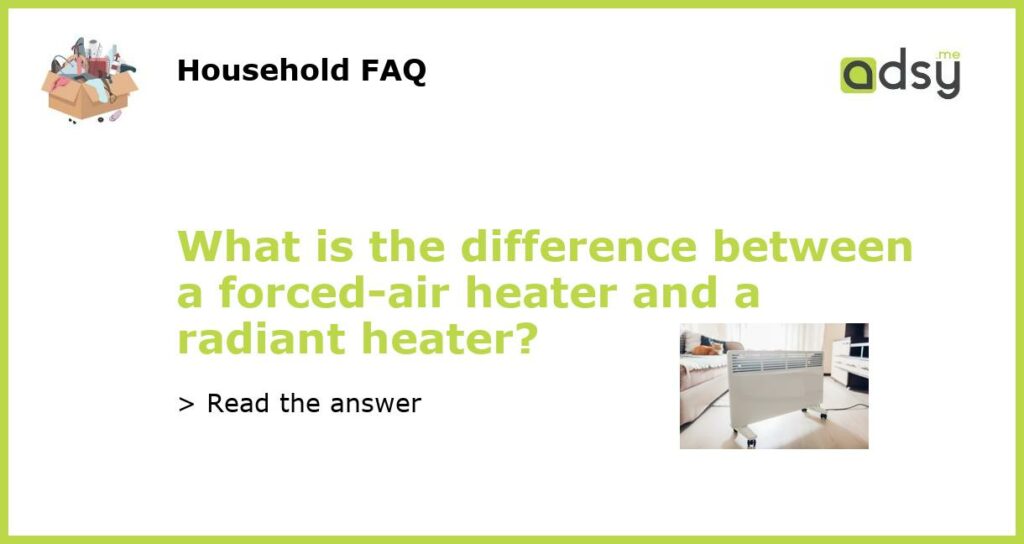Forced-Air Heaters: Understanding the Basics
A forced-air heater is a type of heating system that uses a fan to circulate air throughout a space. This type of heater typically involves a central unit that heats the air and then distributes it via ductwork throughout the building. It’s one of the most common types of heating systems found in homes and commercial buildings.
One of the biggest advantages of a forced-air heater is its ability to heat a large area quickly. The heated air can also be filtered to remove impurities, making it an excellent choice for anyone who suffers from allergies or respiratory issues.
However, forced-air heaters can be noisy and might not be the most energy-efficient option. Additionally, the ductwork required for these systems can be expensive to install and maintain.
Radiant Heaters: How Do They Work?
Radiant heaters are a type of heating system that works by direct transfer of heat energy from a source to the objects in a room. This can be accomplished via infrared radiation, natural gas, or electricity.
Unlike forced-air heaters, radiant heaters do not rely on air movement to distribute heat. They are typically less noisy than forced-air heaters, and they don’t require ductwork, which can make installation and maintenance easier and less expensive.
However, radiant heaters usually take longer to heat up a room, and they only heat objects within their line of sight. This can be a disadvantage if you want to heat a large area quickly or if you have obstacles like walls or furniture that can block the heat.
Which is Better: Forced-Air or Radiant Heater?
The answer to this question depends on a number of factors, including your specific heating needs, budget, and personal preferences. If you’re looking for an efficient, fast way to heat up a large space, a forced-air heater might be your best bet.
On the other hand, if you’re looking for a quieter, low-maintenance heater that can provide targeted heat to specific areas, a radiant heater might be a better choice.
Ultimately, the best choice will depend on your individual circumstances. Be sure to do your research and evaluate your options carefully before making a decision.
Maintaining Your Heater: Tips for Longevity
No matter what type of heater you choose, it’s important to keep it properly maintained to ensure it lasts as long as possible. Here are a few tips for maintaining your heater:
- Regularly replace air filters to keep the air clean and improve efficiency
- Have your system inspected and cleaned annually by a professional
- Keep your thermostat set at a reasonable temperature to avoid overheating the system
- Clean your heater periodically to remove dust and debris
The Bottom Line
Both forced-air and radiant heaters offer unique advantages and disadvantages. The choice between the two will depend on your specific heating needs and preferences. Whichever option you choose, be sure to keep your system properly maintained to ensure longevity and efficiency.






